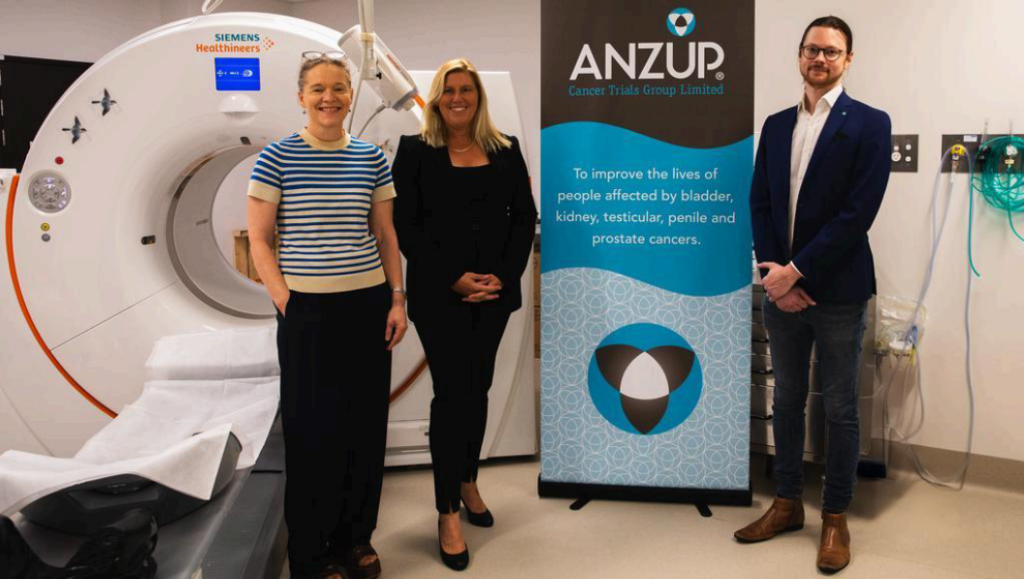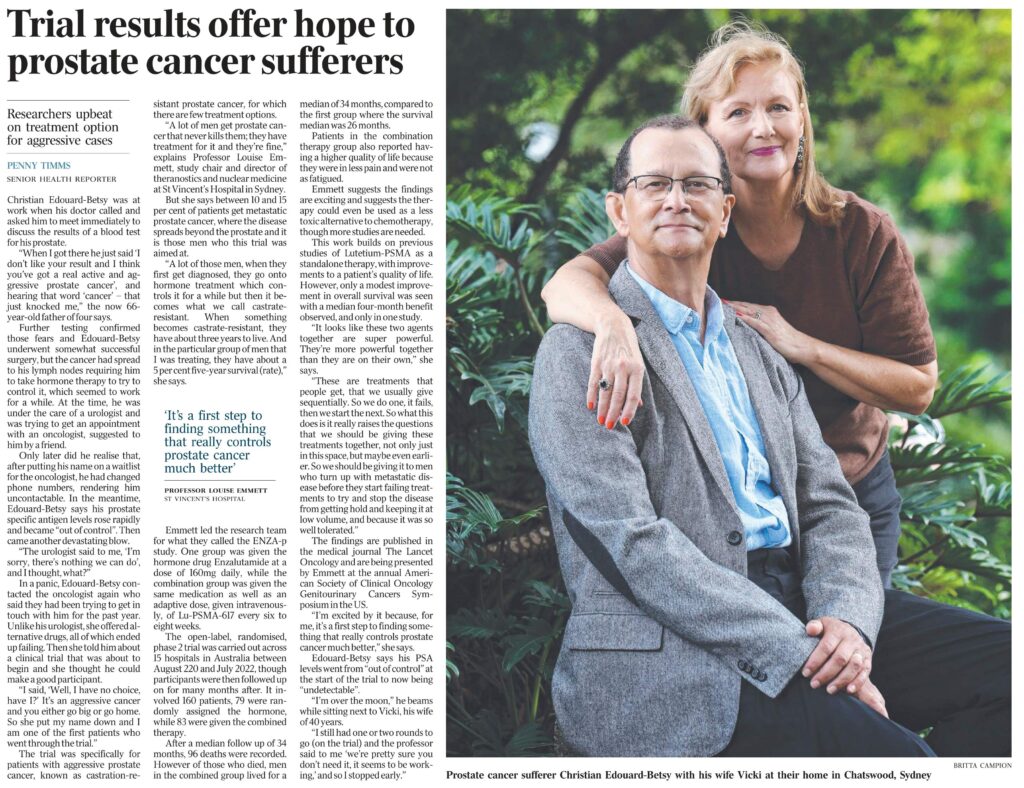Research Highlight – ENZA-p
ENZA-p
Background
Prostate cancer remains the most commonly diagnosed cancer in Australia and New Zealand with over 30,000 people expected to be diagnosed every year. Thanks to world class research, prostate cancer can be treated effectively for the majority of the people affected¹,². Nevertheless, over 4,000 people every year will die due to an advanced or hard-to-treat form of prostate cancer and many more people will have life-long treatment related side-effects including morbidity associated with long-term hormonal suppression, sexual dysfunction and mental health issues³.
Around 96%¹ of people diagnosed with prostate cancer will survive to their five-year milestone but for those with advanced (metastatic) and hard-to-treat cancer, this number is much lower at around 40%³. Better treatments for advanced and hard-to-treat prostate cancers are desperately needed. While hormone treatments like enzalutamide, which block the effects of testosterone, can slow cancer growth in people with advanced prostate cancer, unfortunately, some people will develop resistance to the treatment and around 1 in 4 people will never respond.
About the trial

The world first ENZA-p study, led by Professor Louise Emmett, tested whether a powerful new combination of LuPSMA combined with enzalutamide could improve outcomes in people diagnosed with high-risk advanced (metastatic) castration-resistant prostate cancer.
The trial also tested an innovative world-first treatment approach called ‘adaptive dosing,’ which uses imaging and blood results to identify patients who are responding to the treatment and determine those patients who were most likely to benefit from continued treatment, tailoring the treatment approach for each patient.
Oral presentation at ASCO 2025
An oral presentation ‘Predictive and prognostic value of baseline PSMA-PET total tumor volume (TTV) and SUVmean within a randomised phase 2 trial of enzalutamide versus enzalutamide plus [177Lu] Lu-PSMA-617 (ANZUP1901)’ was delivered by Prof Louise Emmett at the 2025 American Society of Clinical Oncology (ASCO) Annual Meeting in Chicago.
The results of the ENZA-p trial received global recognition earlier this year when it showed that the combination of the radioligand treatment LuPSMA with enzalutamide helped people with poor-risk metastatic castrate resistant prostate cancer live longer and better lives.
Professor Emmett now shows that total tumour volume as measured with PSMA-PET imaging is a reliable prognostic test for overall survival when people are treated with enzalutamide alone and predictive of the combination with LuPSMA. PSMA Standardized Uptake Value (SUV) mean was not prognostic for progression free or overall survival for the combination. The study revealed insights into the use of PSMA PET imaging for predicting response to therapy.
Publications
The primary study results were published in The Lancet Oncology in 2024 4, with further follow-up and secondary endpoints related to overall survival and quality of life published in early 2025, also in The Lancet Oncology 5. The findings showed that the new combination increased the time it took for the cancer to get worse, thereby improving overall survival and quality of life. Patients lived longer and better on the combination treatment.
The full manuscript of the latest results from the ENZA-p study was published in The Lancet Oncology on 30 July 2025 6.
- Read the online version on The Lancet Oncology
- Download the PDF version here
Media attention
The study opens the door for exploring this combination earlier in metastatic prostate cancer and garnered significant media attention, across national media and including a page 3 piece in The Australian.

References:
- Cancer Data in Australia, Australian Institute of Health and Welfare (AIHW) 2024
- New Zealand Cancer Registry (NZCR), Health New Zealand-Te Whatu Ora
- National Cancer Control Indicators; relative survival for prostate cancer by stage, 2011
- [177Lu]Lu-PSMA-617 plus enzalutamide in patients with metastatic castration-resistant prostate cancer (ENZA-p): an open-label, multicentre, randomised, phase 2 trial – The Lancet Oncology
- Overall survival and quality of life with [177Lu]Lu-PSMA-617 plus enzalutamide versus enzalutamide alone in metastatic castration-resistant prostate cancer (ENZA-p): secondary outcomes from a multicentre, open-label, randomised, phase 2 trial – The Lancet Oncology
